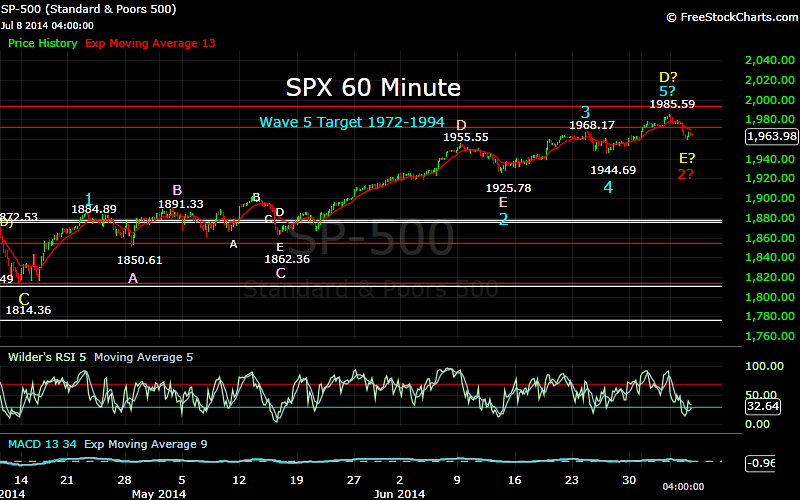After falling to 1959.46 on Tuesday, the SPX
continued the late Tuesday afternoon rally that followed that low into
Wednesday. The index gapped higher at the open, and then chopped its way to a
high of 1974.15. Today saw the SPX gap down, quickly dropping below Tuesday’s
low to 1952.86. After that the index went into recovery mode, rallying back to
1964.10. After a slight pullback, the SPX continued higher, climbing back to 1969.84
before pulling back to 1962.16 before moving higher into the close.
With the SPX falling below Tuesday’s low of
1959.46, it now appears that my short term count was wrong. I had cautioned on
Tuesday that there might be one more move down, and that seems to have occurred
today. The decline from 1985.59 can now be counted as
1974.88-1977.58-1959.46-1974.15-1952.86. My mistake was in counting the move
from 1974.88 to 1977.58 as 3 waves, when it appears to have been 5 waves.
Without changing any other waves, the decline from 1977.58 to 1959.46 can be
counted as a 5 wave sequence. The choppy action from the 1959.46 low also looks
like a 5 wave sequence, 1967.56-1962.58-1971.15-1965.22-1974.15.
After falling to 1952.86 this morning to complete
5 waves from 1985.59, the SPX rallied. The initial bounce to 1964.10 was a 5
wave sequence. This was followed by a pullback to 1961.30, and then another 5
wave sequence to 1969.84. The pullback rally to 1969.84 appears to be Waves A
and B of an inverted corrective wave 2. The decline to 1962.16 then completed
Waves C, D, and E of this corrective wave. With Wave D also being an inverted
corrective wave. If this count is correct the SPX should continue to rally,
most likely to new highs.
I am still counting the decline from 1985.59 as
Wave E of an inverted corrective wave that began in March at 1882.35. My lower
limit of 1937 for this decline is based on the range in which Wave E of this
inverted corrective wave can complete.










